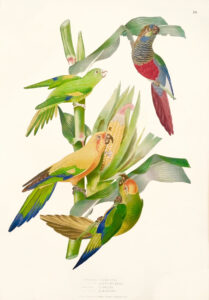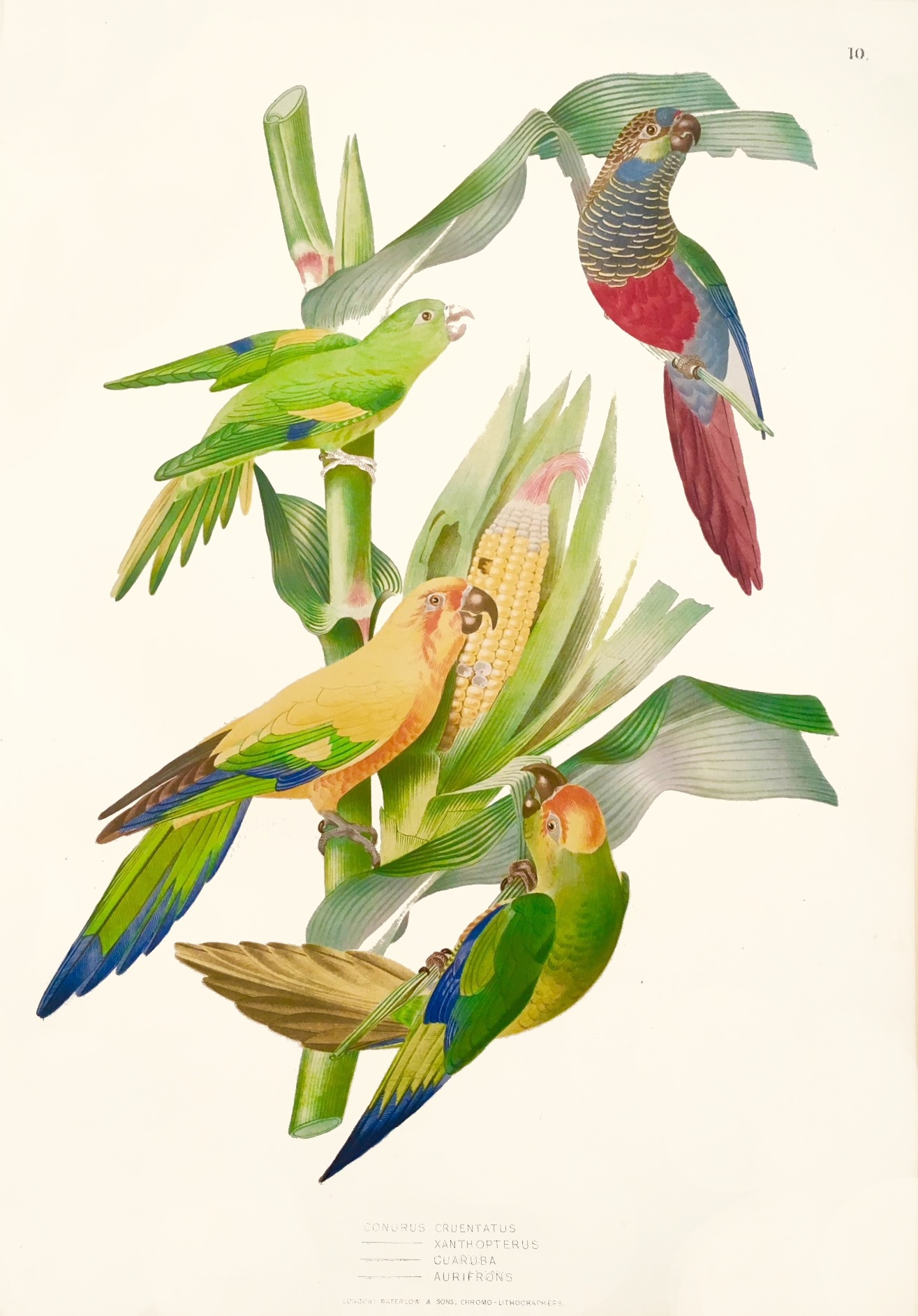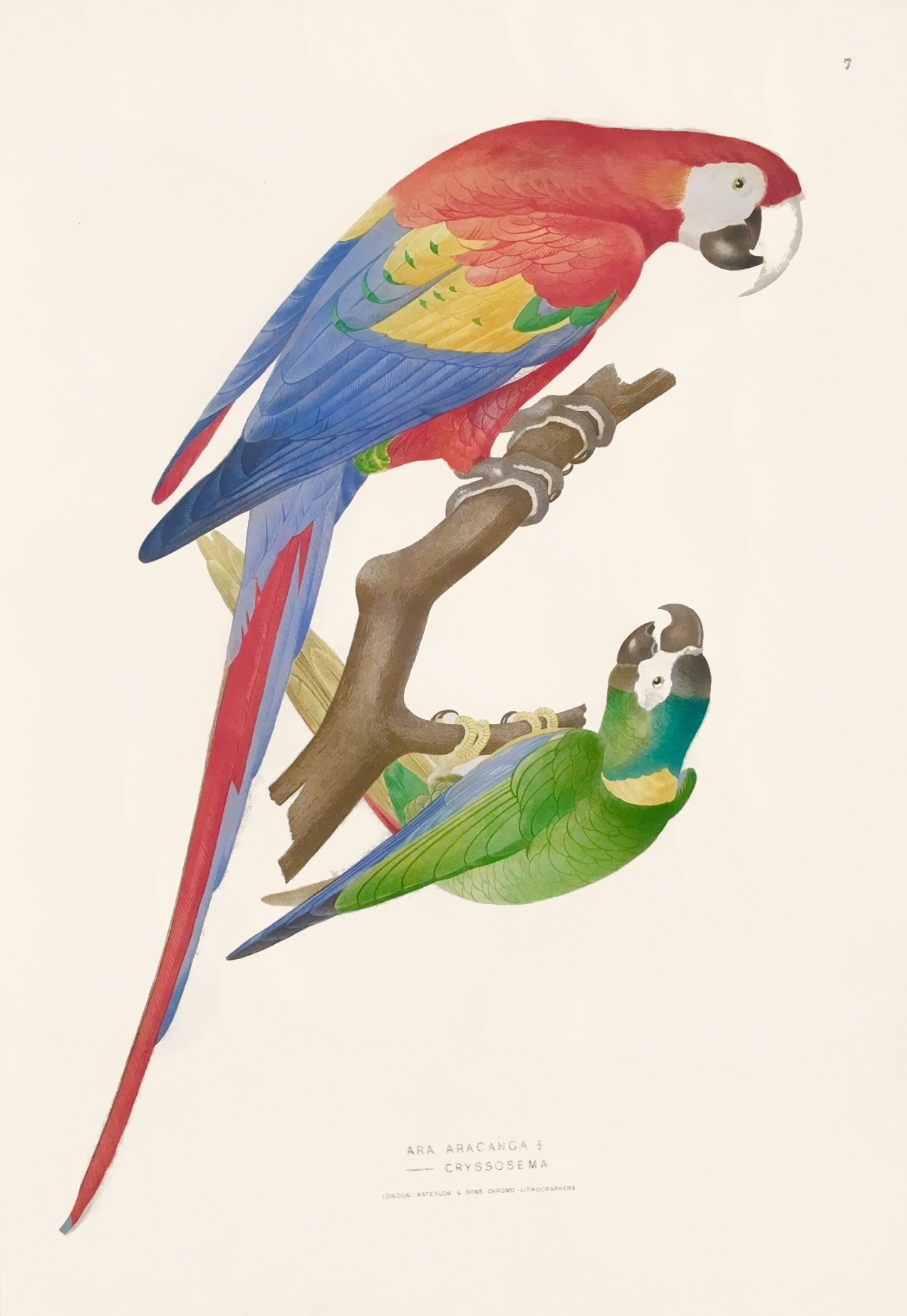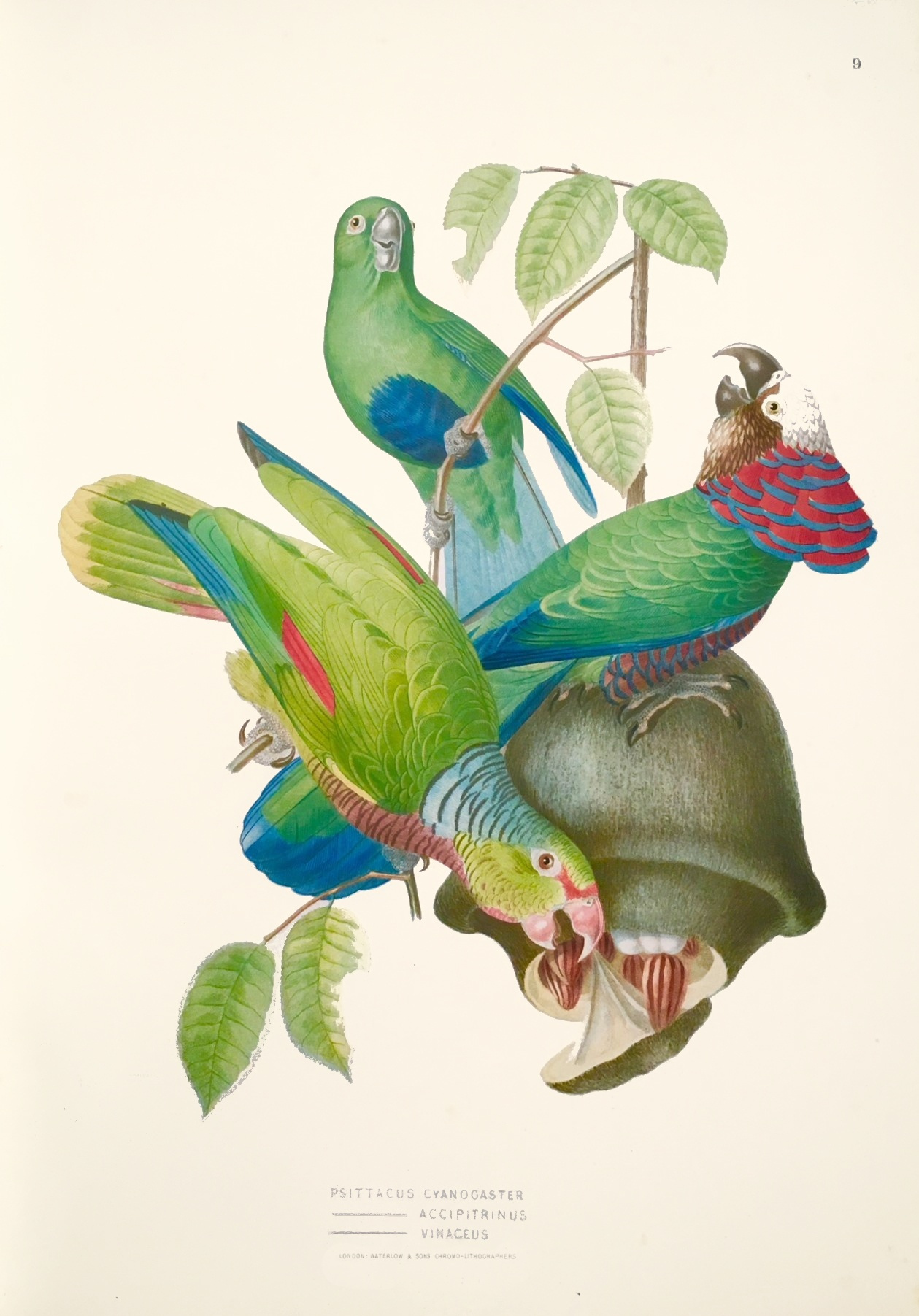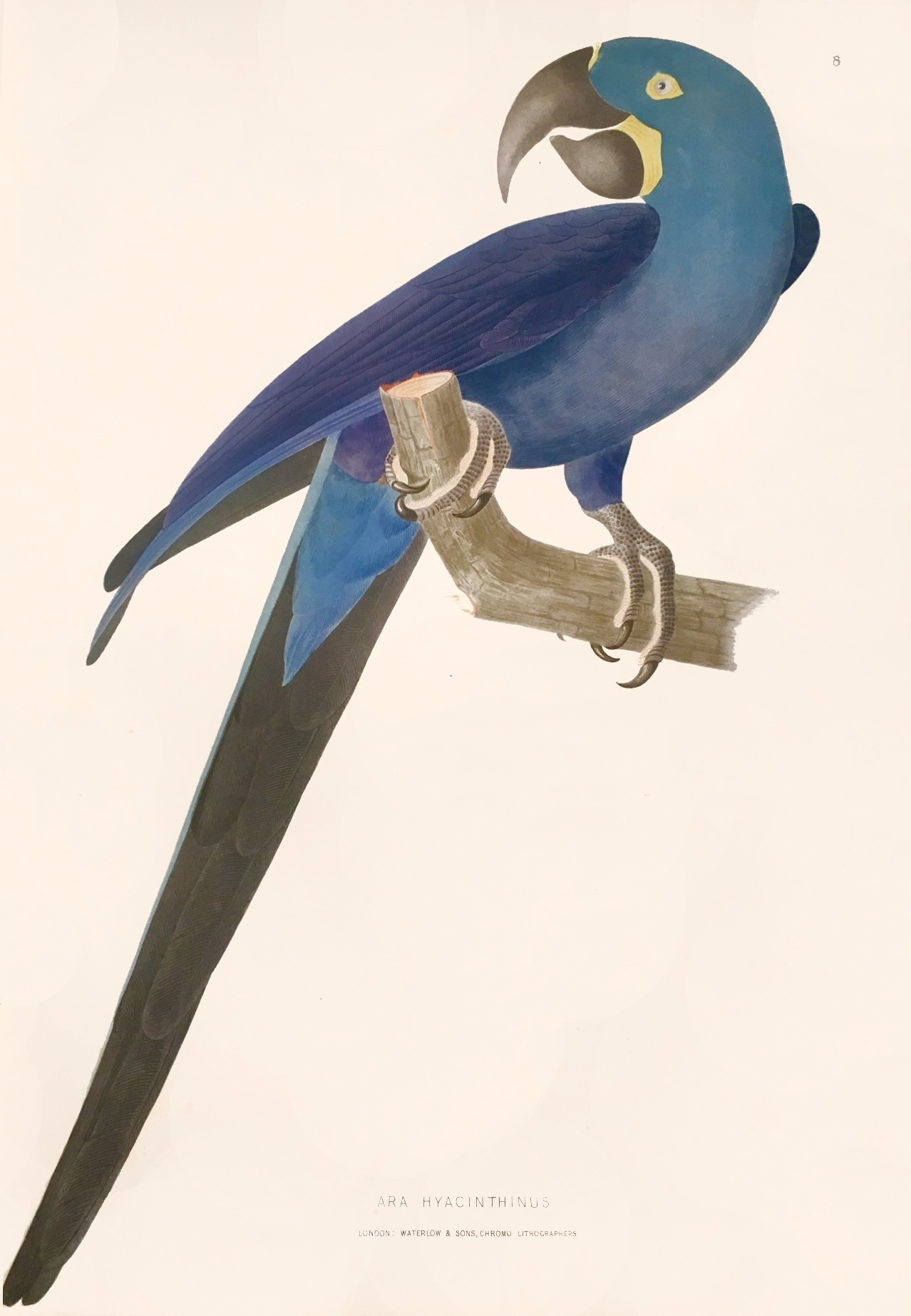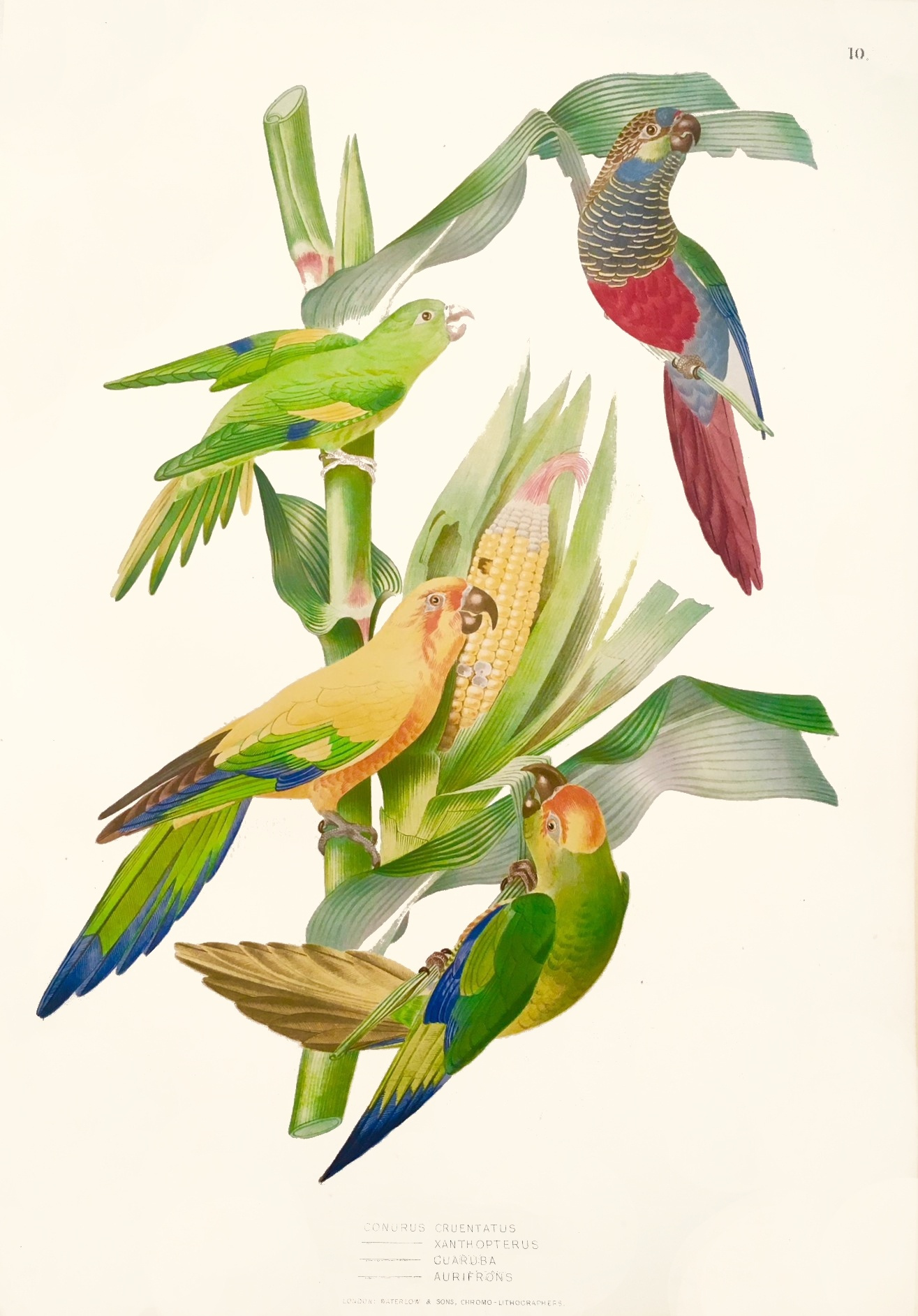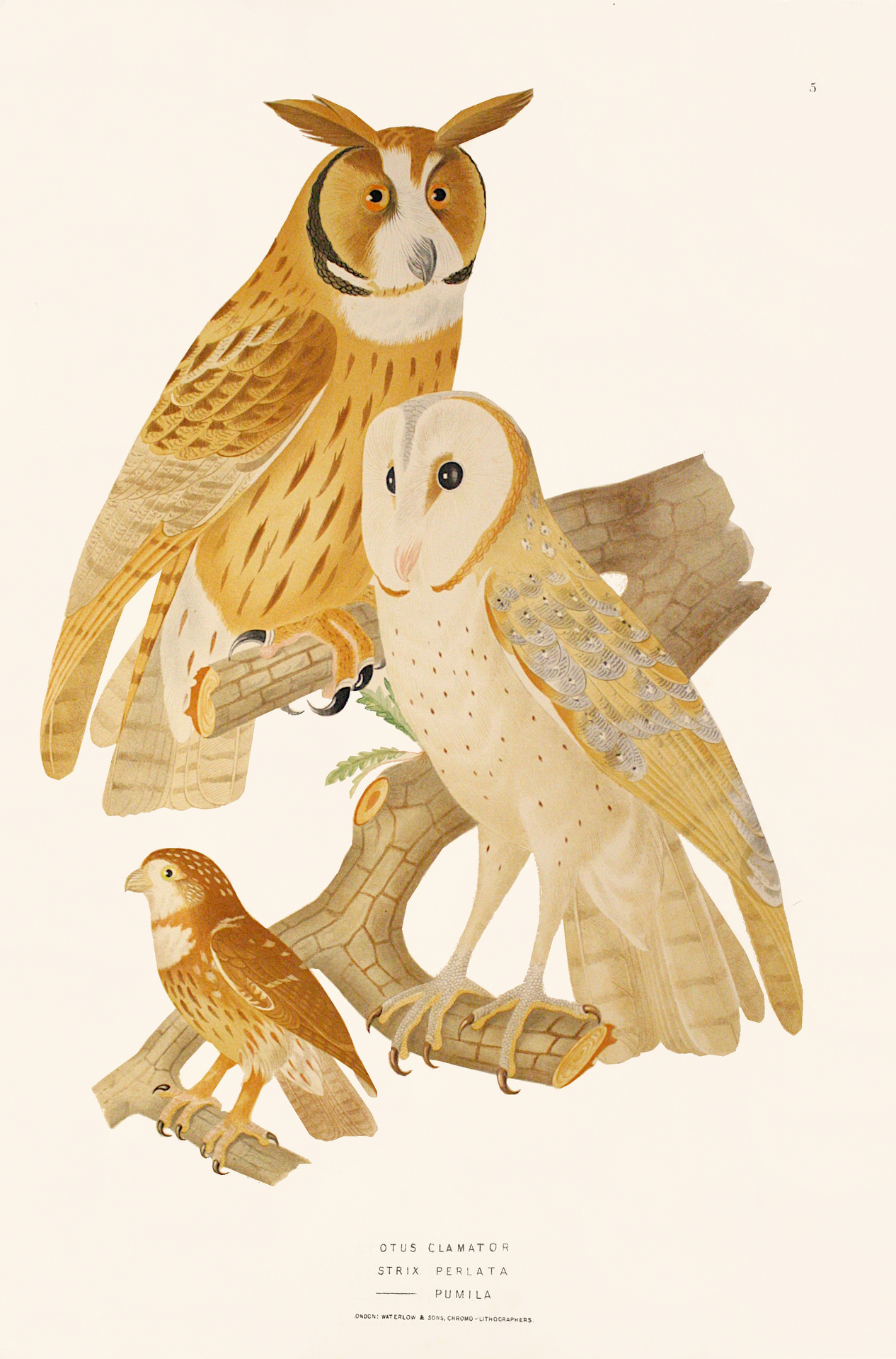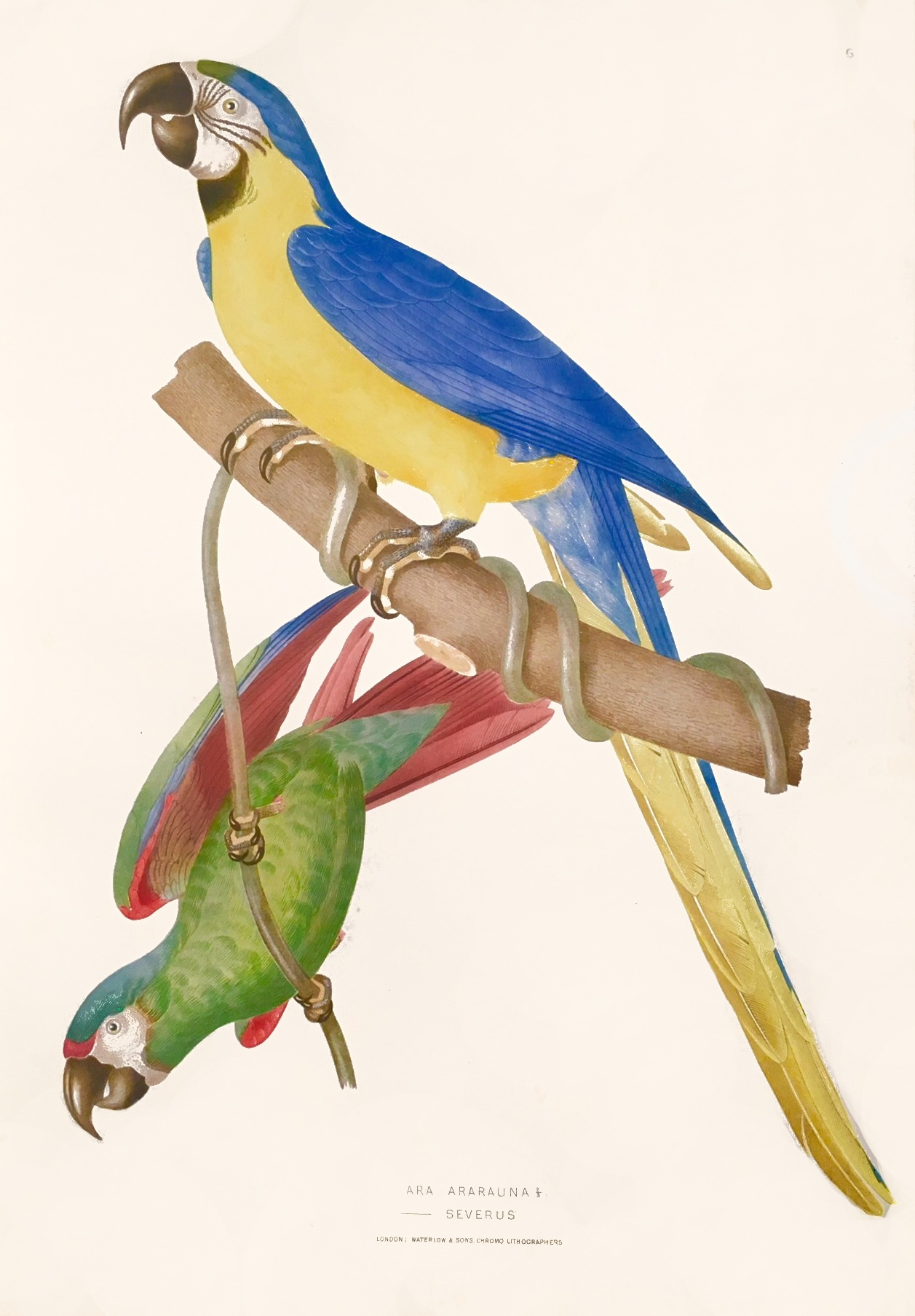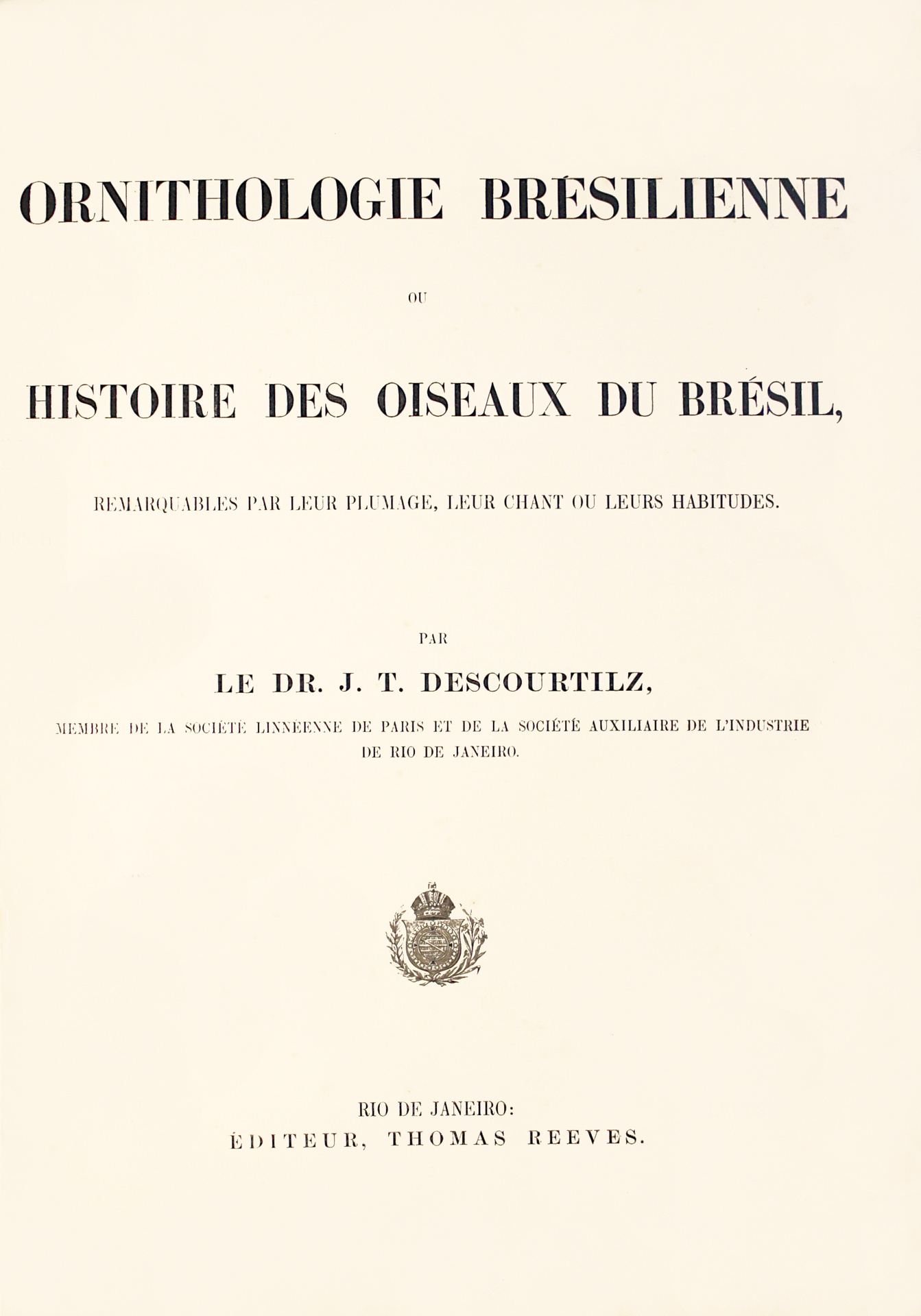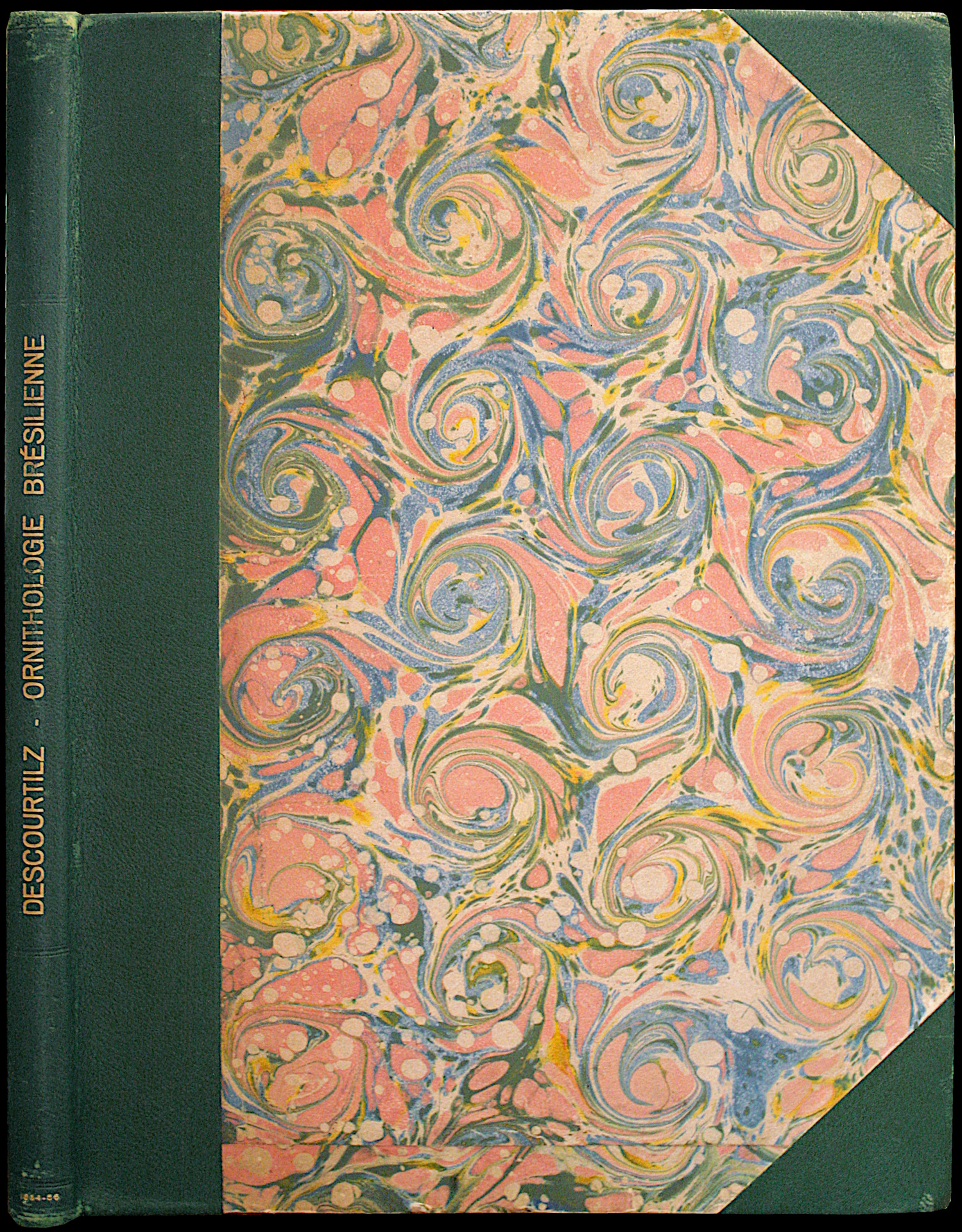Rio de Janeiro, Thomas Reeves, s.d. [1852-1856].
Large folio [619 x 443 mm] of 42 pp. of text, 48 full-page plates in color, some foxing on few plates. Quarter green morocco, flat spine. Later binding.
First edition of this work dedicated to tropical birds, published in 4 lêflets.
Copies complete with the text and plates are very rare.
Borba de Moraes, I, p. 260 ; Fine Bird Books p. 90; Nissen, IVB, 236 ; Sabin, 19692 ; Zimmer p. 166 ; Wood, p. 315 (“A very important, fundamental, systematic trêtise“).
This work describes 164 species of tropical birds, including 15 unknown until then and a new genre.
“This publication is rare and grêtly sought after” (Borba de Moraes).
Jên-Theodore Descourtilz (1796 – 13 January 1855 in Riacho das Almas) was a French naturalist, painter and illustrator, the son of French adventurer and botanist Michel Étienne Descourtilz (1775-1835). Jên-Theodore was a noted ornithological artist who published Oisêux brillans du Bresil in Paris in 1834, and did the plant illustrations for his father’s Flore Medicale des Antilles published between 1821 and 1829.
He arrived in Brazil in about 1826, since in 1831 his lavishly illustrated manuscript on the hummingbirds of São Paulo and Rio de Janeiro was acquired by the library of the National Museum. Descourtilz was an interested and meticulous observer, concerned about the accuracy of his notes which concisely described the habits and appêrance of êch species. His poetic and flowery text was in keeping with the period, and was invariably accompanied by colour plates of the species studied.
Ornithologie Bresilienne ou Histoire des Oisêux du Bresil describes and figures 164 species of Brazilian birds, 15 species and 1 genus new to science. Four parts of the work appêred, êch with 12 plates by Descourtilz, before his sudden dêth in 1855. The plates were prepared in London, and apparently printed by Waterlow and Sons and also Joseph Masters and Co.
In the late 1840s or êrly 1850s he was sent by the Government to the province of Espírito Santo to investigate the animal life and to report on precious minerals. He discovered traces of gold and iron in the vicinity of the village Laurinha, crêted by the provincial government to house and proselytise the Puri Indians. However, the ill-trêtment suffered by the Indians drove them away and led to the decay of the village. At the site there was a village that eventually became the city of Conceição do Castelo on the hêdwaters of the Rio Castelo, a tributary of the Itapemirim. Descourtilz explored the city of Itapemirim and nêrby towns, gathering various minerals and a collection of crystals, all lodged with the National Museum of Rio de Janeiro, where he took up an appointment in 1854.
Descourtilz was a member of the Société Linnéenne de Paris and of the Société Auxiliaire de l’Industrie de Rio de Janeiro. He died of arsenic poisoning caused by chemicals he used in the preparation of specimens.
The 48 large chromolithographs have been printed in London by Waterlow & Son from Descourtilz and sumptuously enhanced by hand at the time.
The plates of this copy bêr the mark of Waterlow, without date, while other copies bêr London, Joseph Masters, 1852.
Precious copy of this rare work of ornithology complete with its 48 full-page plates contemporary hand-colored.
